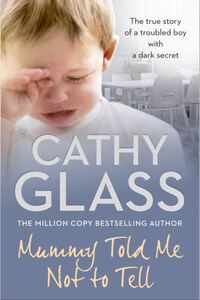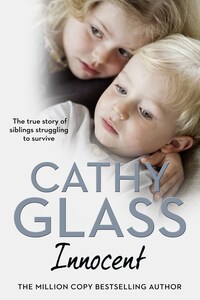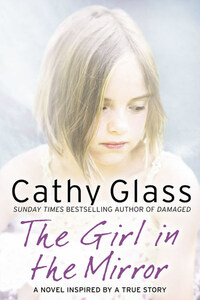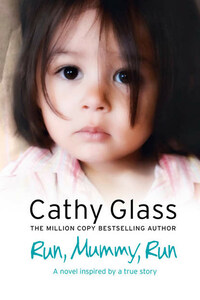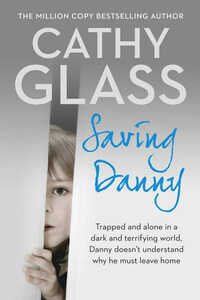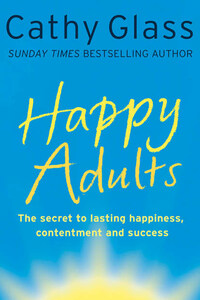Certain details in this story, including names, places and dates, have been changed to protect the family’s privacy.
HarperElement
An imprint of HarperCollinsPublishers Ltd. 1 London Bridge Street London SE1 9GF
www.harpercollins.co.uk
First published by HarperElement 2010
Copyright © Cathy Glass 2007
Cover layout design © HarperCollinsPublishers Ltd 2015 Cover images © IndexStock/SuperStock (child, posed by model); Shutterstock.com (background)
A catalogue record of this book is available from the British Library
Cathy Glass asserts the moral right to be identified as the author of this work
All rights reserved under International and Pan-American Copyright Conventions. By payment of the required fees, you have been granted the nonexclusive, non-transferable right to access and read the text of this e-book on screen. No part of this text may be reproduced, transmitted, downloaded, decompiled, reverse engineered, or stored in or introduced into any information storage retrieval system, in any form or by any means, whether electronic or mechanical, now known or hereinafter invented, without the express written permission of HarperCollins e-books
HarperCollinsPublishers has made every reasonable effort to ensure that any picture content and written content in this ebook has been included or removed in accordance with the contractual and technological constraints in operation at the time of publication
Source ISBN: 9780007362967
Ebook Edition © September 2008 ISBN: 9780007362974
Version 2016-08-17
Damaged
Hidden
Cut
The Saddest Girl in the World
Happy Kids
The Girl in the Mirror
I Miss Mummy
Mummy Told Me Not to Tell
My Dad’s a Policeman (a Quick Reads novel)
Run, Mummy, Run
The Night the Angels Came
Happy Adults
A Baby’s Cry
Happy Mealtimes for Kids
Another Forgotten Child
Please Don’t Take My Baby
Will You Love Me?
About Writing and How to Publish
Daddy’s Little Princess
The Child Bride
Saving Danny
Girl Alone
The Silent Cry
Cover
Title Page
Copyright
Also by Cathy Glass
Prologue
Chapter One: Respite
Chapter Two: A New Record
Chapter Three: Sharky
Chapter Four: Toilet Training
Chapter Five: Safer Caring
Chapter Six: Kids in Care
Chapter Seven: Chaos
Chapter Eight: ‘School’
Chapter Nine: Starting to Get Annoyed
Chapter Ten: Summoned to the Head
Chapter Eleven: An Uncertain Start
Chapter Twelve: The Wider Family Picture
Chapter Thirteen: A ‘Done Bad’ Day
Chapter Fourteen: Seaside Escape
Chapter Fifteen: Set Apart
Chapter Sixteen: Heated Debate
Chapter Seventeen: A Dark Cloud
Chapter Eighteen: Cycle of Abuse
Chapter Nineteen: Normal Family
Chapter Twenty: Forever Family
Chapter Twenty-One: It’s Sad to Say Goodbye
Epilogue
Suggested Topics for Reading-Group Discussion
Sample Chapter
Cathy Glass
Moving Memoirs eNewsletter
About the Publisher
‘Is he staying with you now?’ she bellowed. ‘He better be! I ain’t ‘aving ‘im moved again. It’s a bleeding disgrace. Them wankers!’
‘No, he won’t be moved again,’ I reassured Tracey.
Reece was pulling on my arm and making a loud hissing noise. ‘Stand still, good boy,’ I said.
‘Do as you’re bleeding told!’ Tracey yelled, giving him another cuff over the head.
And that was my first meeting with Tracey, Reece’s mother.
Certain details, including names, places and dates, have been changed to protect the children in this story
My family and I had said a very emotional farewell to Tayo (the boy whose story I described in my book Hidden), our previous foster child, at the end of October, and because we had grown so close to Tayo it seemed a good idea to do some respite fostering, rather than take on another long-term placement.
‘Respite’ in fostering terms means looking after a foster child (or children) for another carer while that carer takes a much-needed break. Respite fostering doesn’t have the same emotional drain or complications as short or long-term fostering: the child or children arrive clean and well fed, with everything they need for their stay, and safe in the knowledge that they will be returning to their permanent carer(s) after the break. Some foster carers only ever do respite fostering, and have a steady procession of children staying with them. The foster carer looks after the child in exactly the same way as they would any fostered child, but the child’s time with her (or him) is viewed as a short holiday by all concerned, and the foster carer knows that she cannot become too involved. For this reason respite fostering is said to be ‘easier’. While I am always happy to offer respite if I don’t have a foster child, I prefer the involvement of longer placements, and the satisfaction of knowing I have, I hope, in some small way helped a child along the difficult path of life.
After Tayo left and before we embarked on the respite fostering we took a week off and had no foster child at all. This gave me a chance to give the bedroom a thorough cleaning and airing, and also me and my family — Adrian, Paula and Lucy — a chance to come to terms with Tayo’s departure. Although Tayo had left in the best possible circumstances, there was still a sadness, a gap in the family, which would take time to diminish, and would probably only start to go with the arrival of the next child. Some foster carers take a new placement straightaway for this very reason.
